5 January 2022
Powys, Wales
Weather: cold winter showers with lengthy spells of sunshine. -1 degrees. 4 degrees during daytime.
With the van going in for paintwork on Friday I thought I’d take advantage of the weather and get one shoot in before it was taken away from me. I set off at 5am to the Brecon Beacons to photograph St. Ellyws in Llanelieu, Powys, Wales.
I take the A483 into the eastern foothills of the Cambrian Mountains - snow is falling lightly - roads are good. The snow is light enough to add contrast to minor variations in the landscape. This sharpening of the detail has a knock on effect - it heightens awareness of the surroundings, makes me feel more connected and in the moment.
As the road heads beyond Newtown it snakes alongside the River Ithan - Afon Ieithon (Welsh) - a major tributary of the River Wye. It’s familiar territory: I recognise the snaking turns, the sign for a car park. There’s a church around here, somewhere. I pull over just as the light is glimmering to the south. There’s an opportunity here to capture a church in the snow. Should I chance missing my arrival at St. Ellyw’s which is about an hour away at the foot of the Brecon Beacons?
I decide to chance it. There’s an inch of snow. I take the tripod off the side shelf of the van and fix my camera to it. I open the side door and lose my footing as I step out of the van. I manage to hold onto the door.
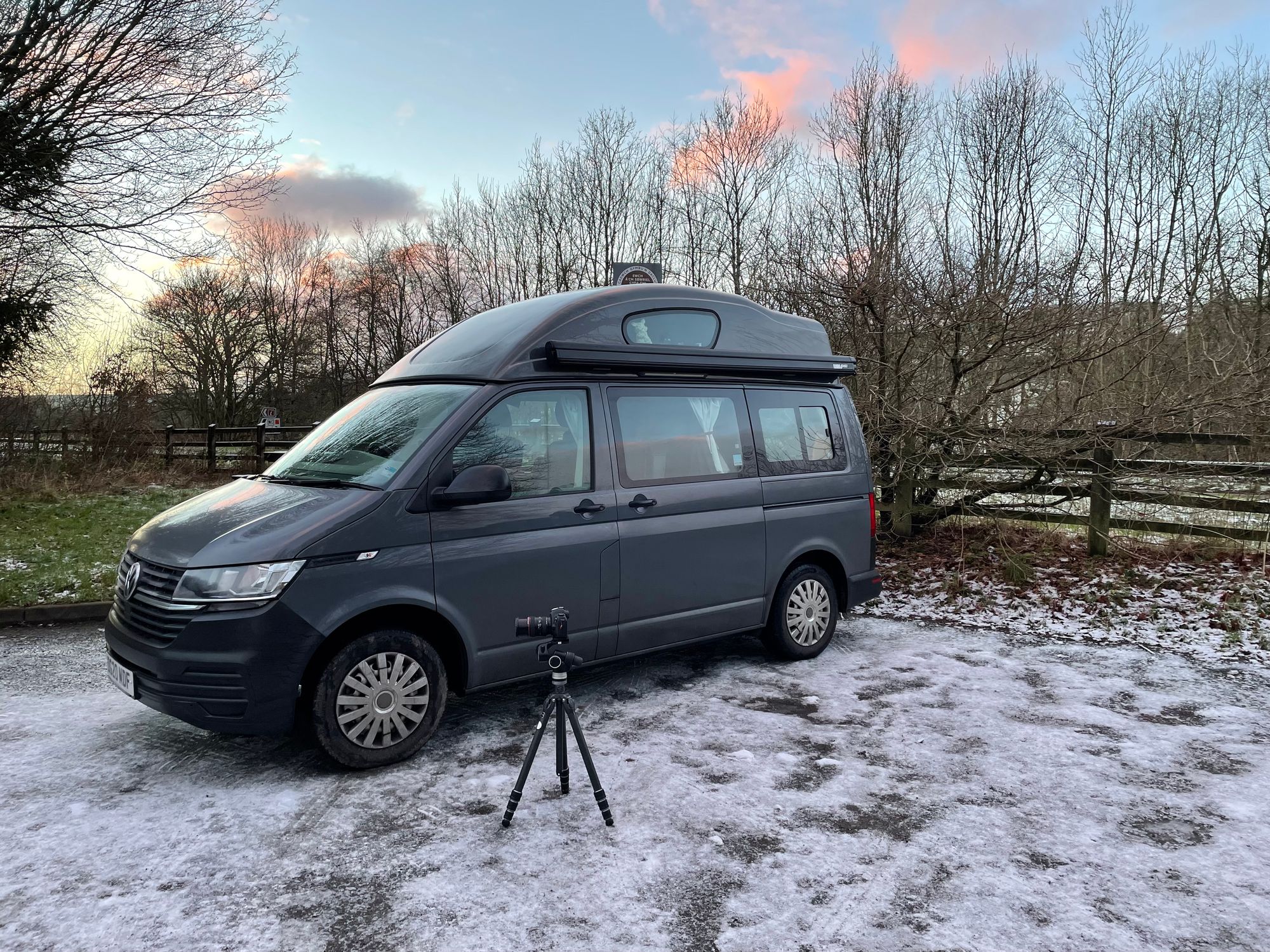
There’s no traffic, so I dart along the treacherous embankment using the tripod as a counterweight to my slipping and sliding. About a hundred yards onward and I’ve come to a slipway in the road that leads to a farmstead. Tucked beyond the slip and set into a field with its bellcote facing the might of the Cambrians is St. Anno’s. I take a few shots from the roadside and then head in.
Access is through a swing gate beneath an arch of shrubs. I love transitional areas like this. The impromptu archway into the church yard forces me to duck and dive. I snag my tripod - it's a passage of rights. On the other side is a monotone world. The scatter of snow finds no contrast against the grave stones which are covered in a whitish teal lichen - everything looks as though it’s been shrouded in white linen for the day. The effect is surreal and dreamlike. I take a few shots of the church and the encrusted swags and curves on the gravestones.
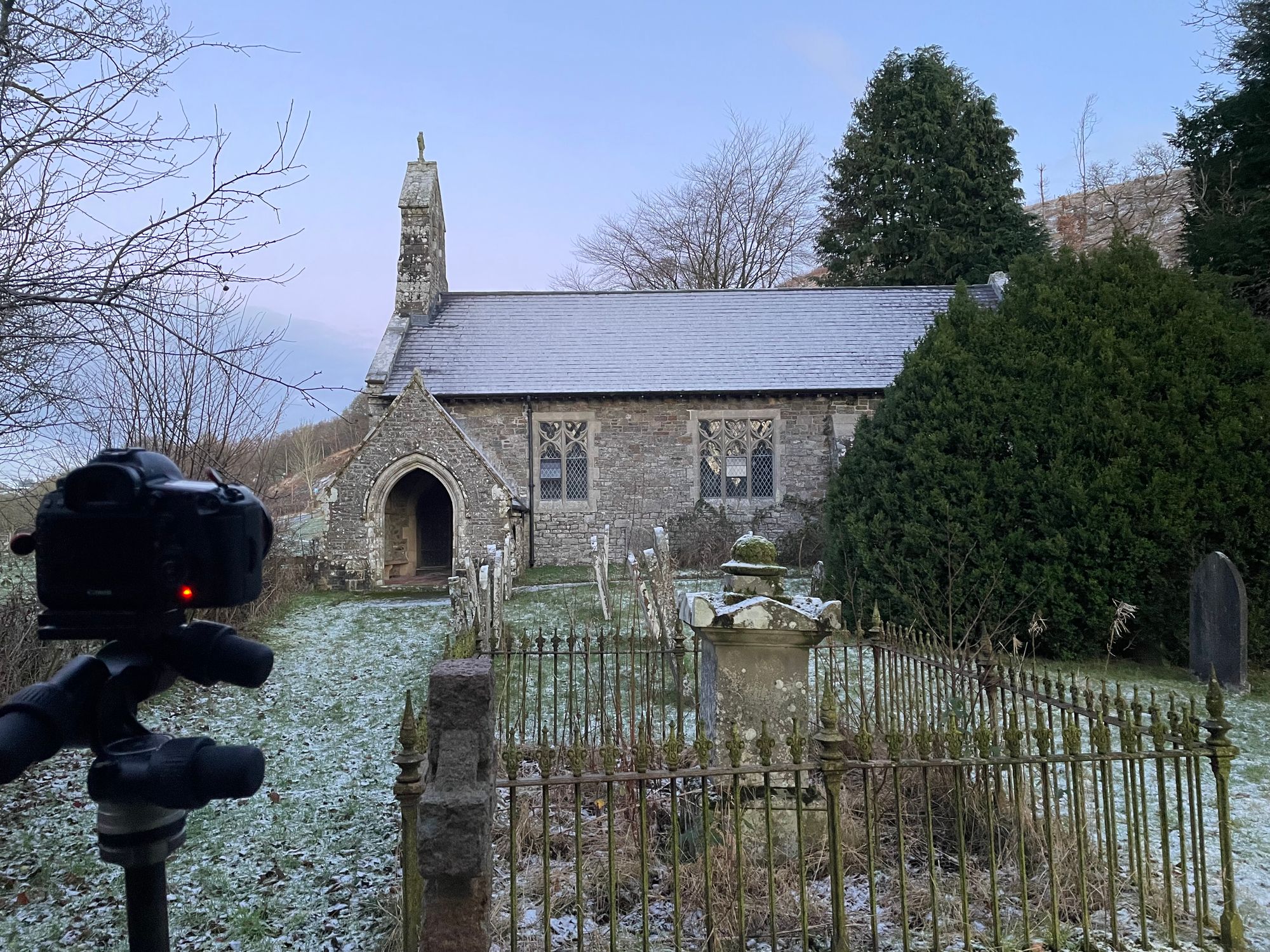
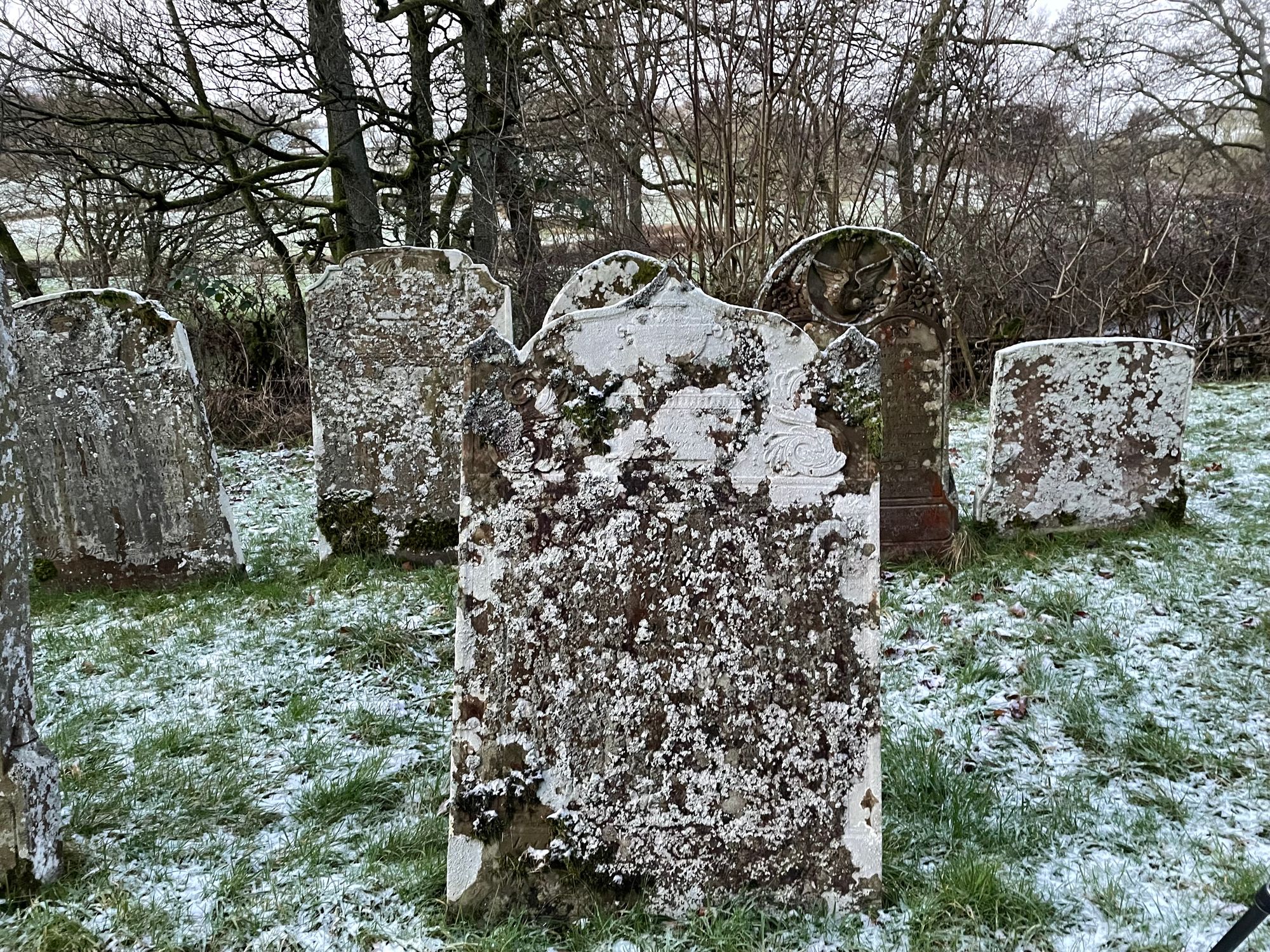
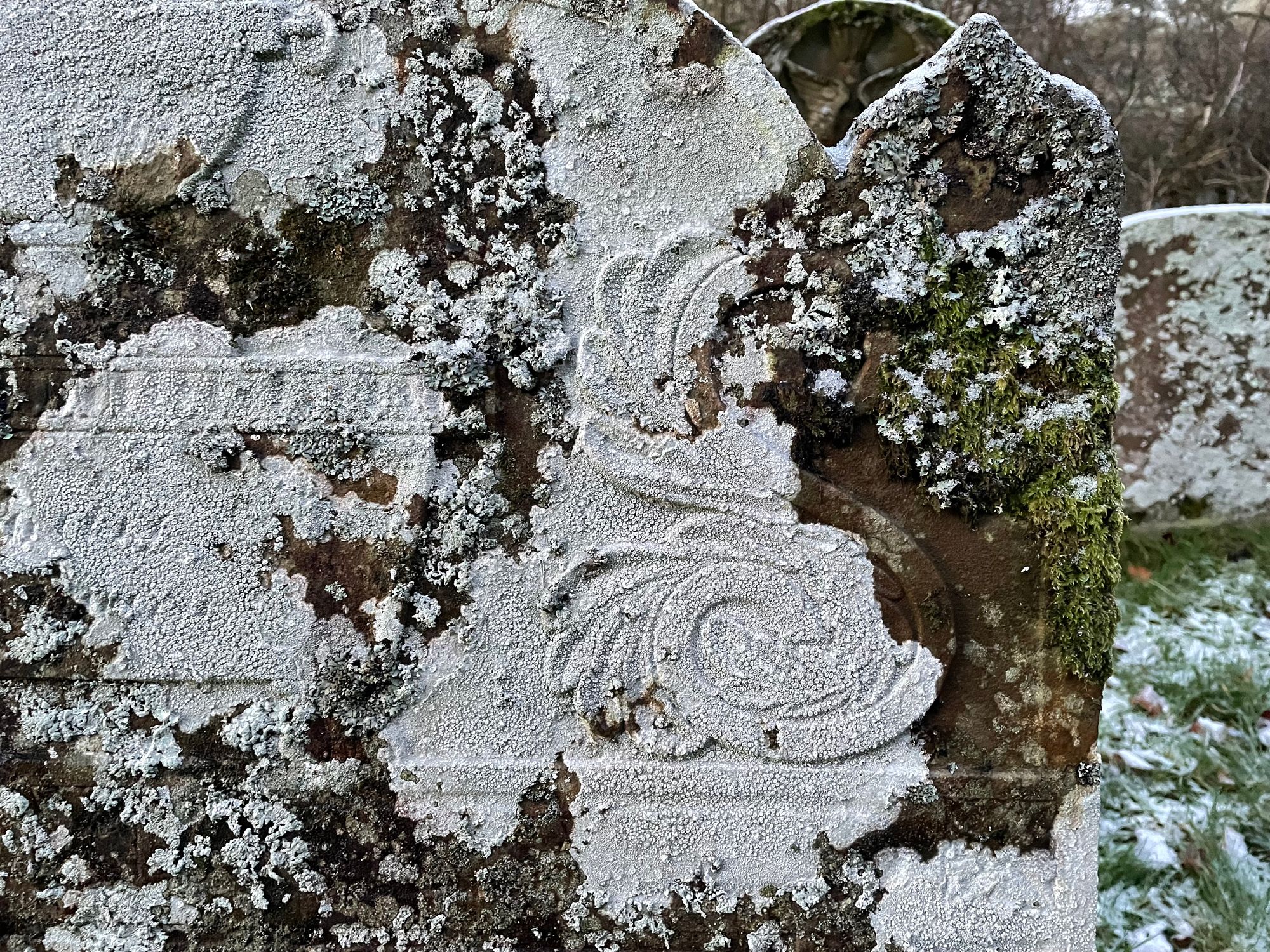
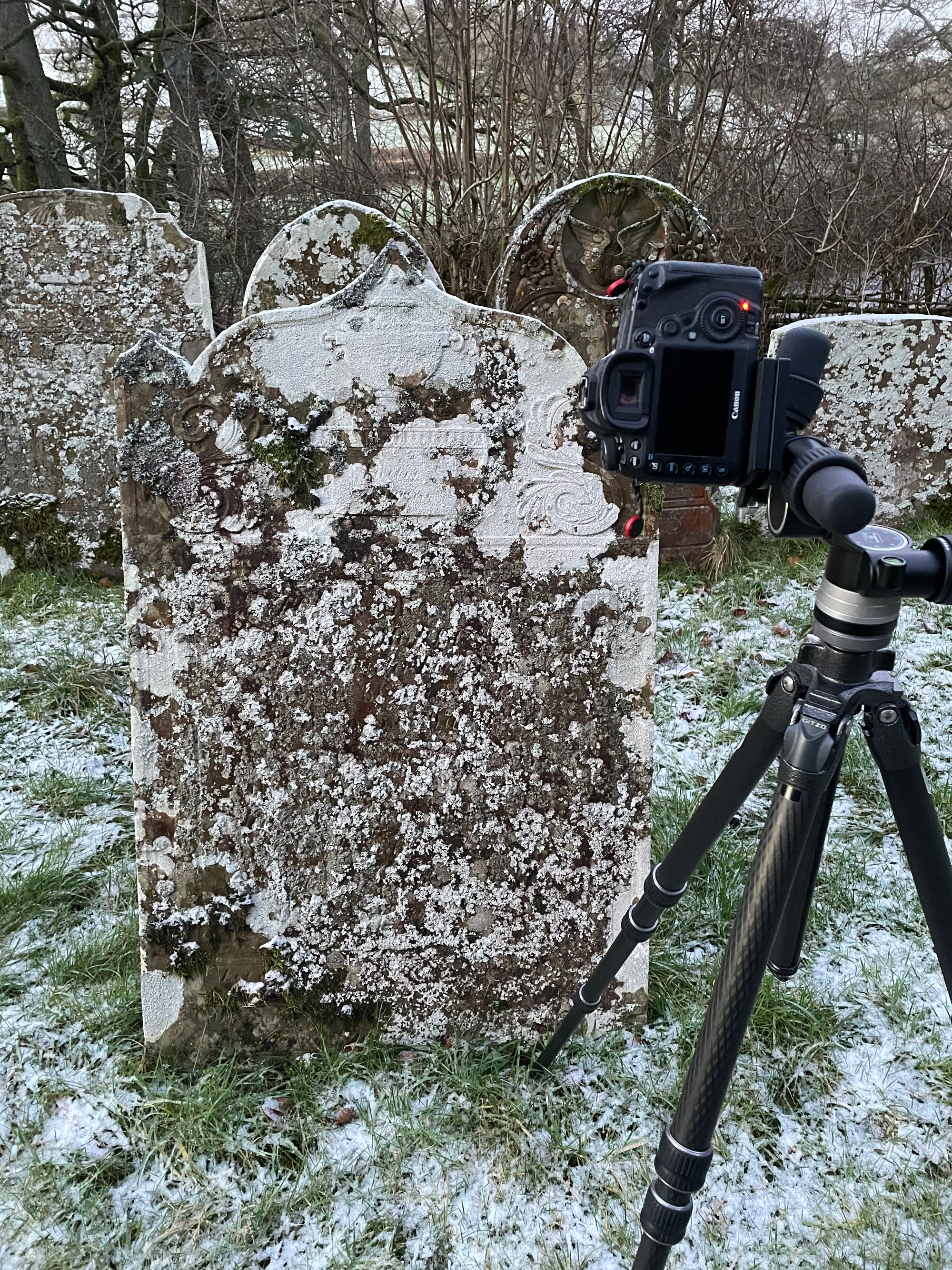
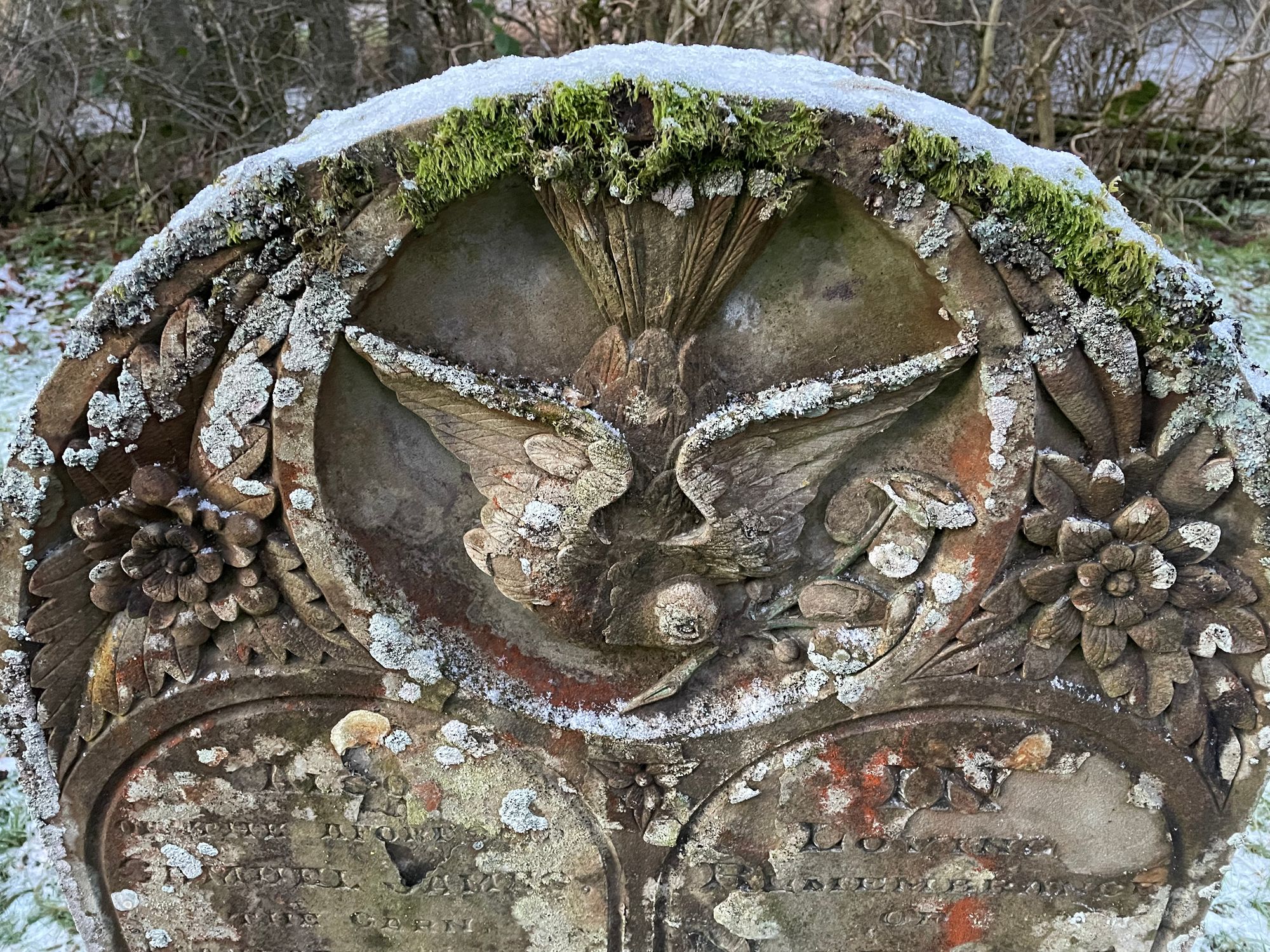
When I leave, I drive out of the car park and see a cloud moving to frame the church, its underside lit by pinky hues. I’ve done this a thousand times or more - caught between the need to meet a schedule and the piercing demands of the present. I swerve the van off the road into a lay-by opposite the church. I pull out the tripod and camera and re-take my position opposite the field. It’s such a glorious view that I forget to release the shutter button. I’m breathing heavily. ‘Calm down’ I say to myself - ‘stop and take it in’. Before I take the photograph, I need to ground myself - raise up the parabola - become sensitised to the flux of light within the atmosphere. I need to become the atmosphere.
Then click: a photograph taken in the press of a divine moment.
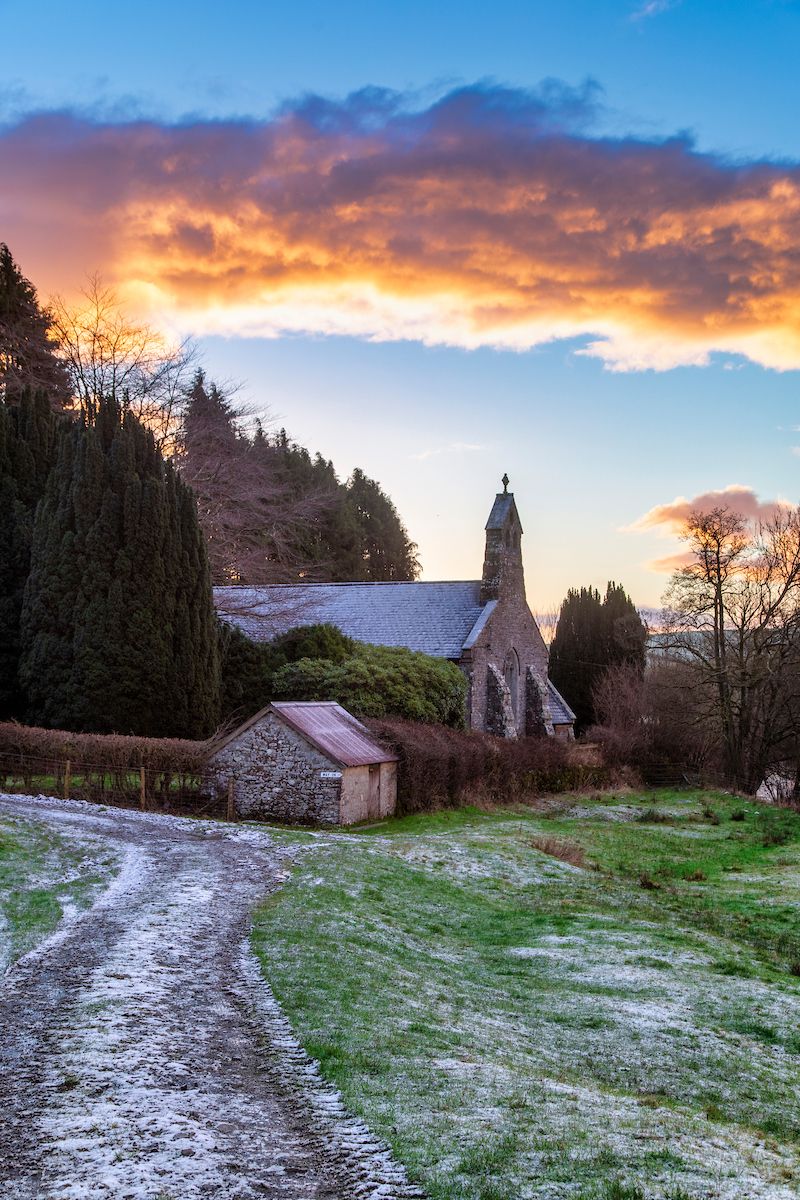
The road to St. Ellyw’s is a hollowed out single track - cut into the side of forests and fields. I sense that I’m getting closer to the church when the van starts to jitter across chevroned mud scatter, and soon the road dissolves into a farmyard with boundaries that are vaguely visible beneath the ochre clay that saturates these parts.
The church lies within a scattered hamlet. I park next to the bridge over the brook and hike up the steep lane and position myself between the church and the Black Mountains, looming with a mantle of snow to the south. I always try and get a sense of a building before I photograph it. The boundary here is oval shaped, betraying a ritualistic landscape that is older than the church
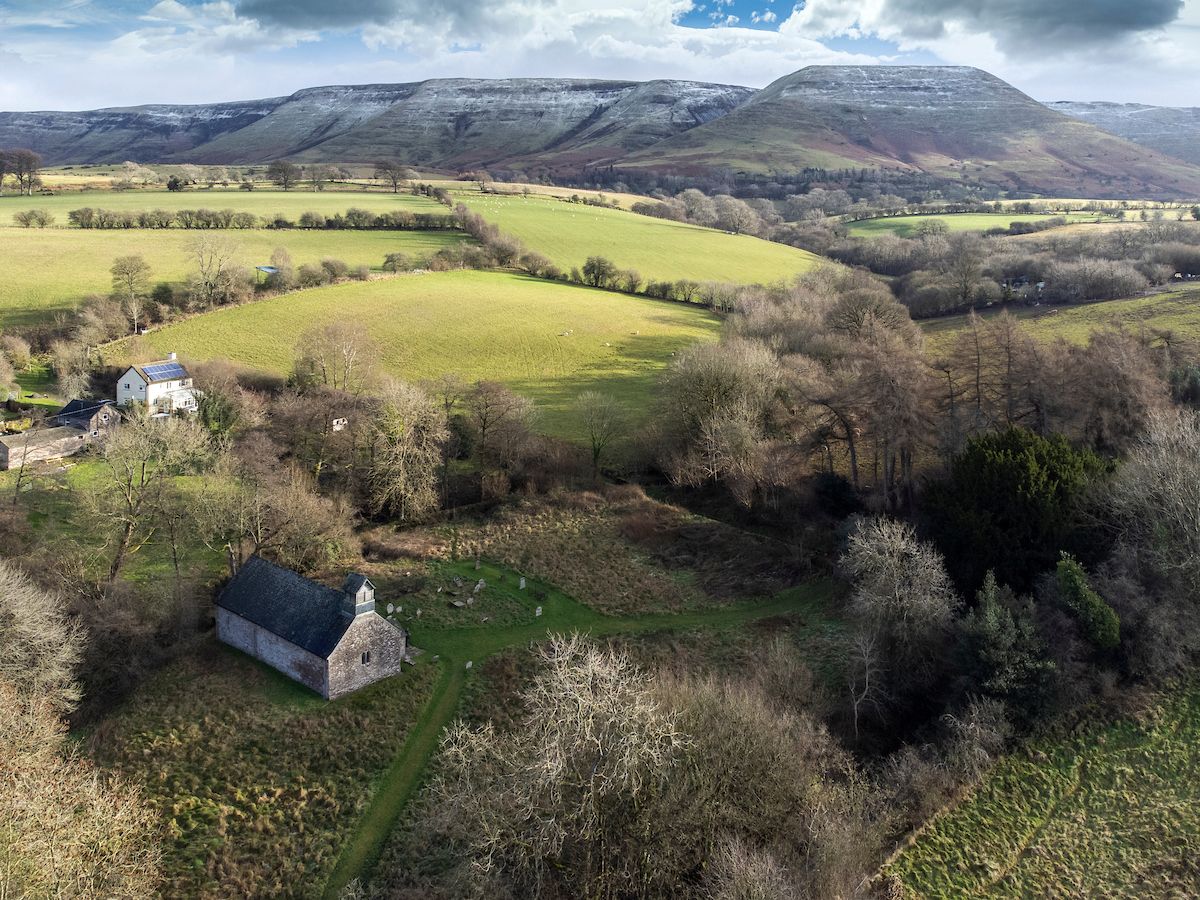
There's something special about entering a church, and the best places evoke a transitional feeling upon entrance. There's no exception here. The view over to the east end is divine: the medieval rood screen survives and is painted with ox-blood. Upon the screen is the presence of absence - a ghost-rood - the cross stripped away in harsher times.
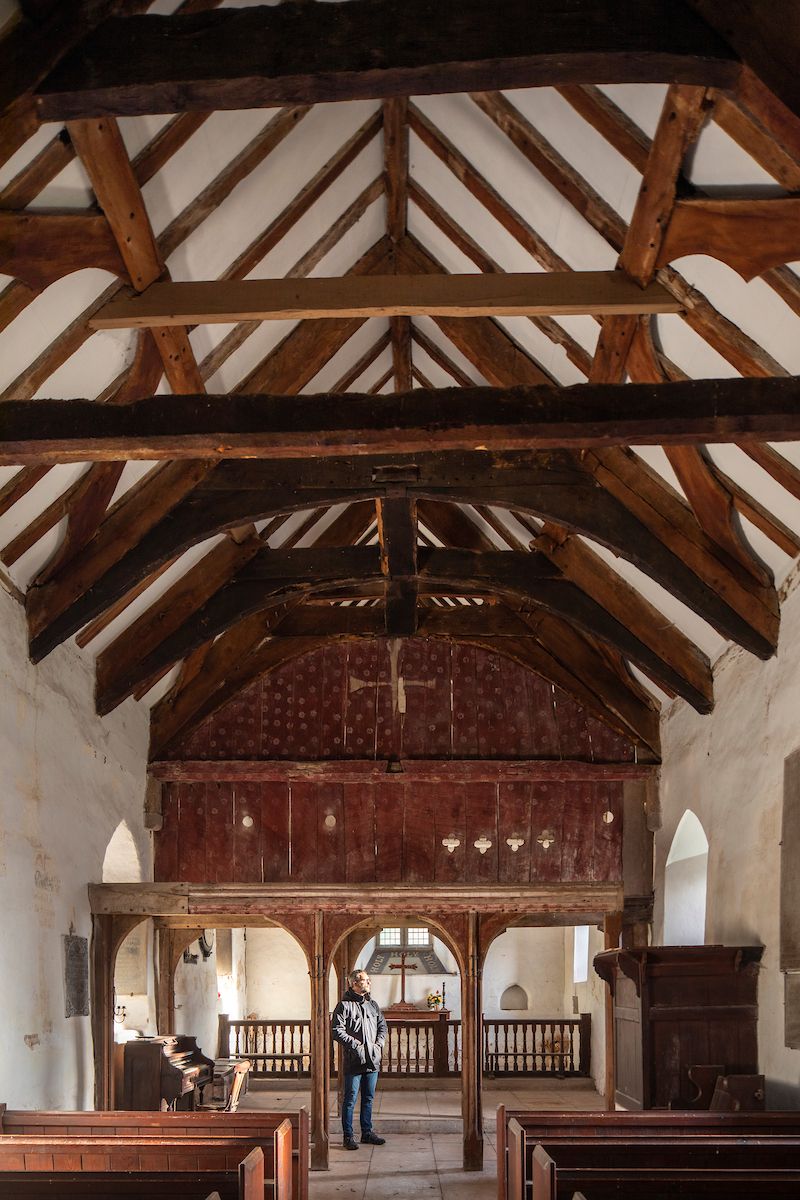
I notice that the door at St. Ellyw's is made of ancient oak, with a patina that's been curing for centuries. Once inside, I see a gap in the base of the door and a small hole half way up the door. A little later, whilst photographing a wall painting, there's some movement at the base of the door: a wren hops inside, slants its head at the tripod and then flies up to the roof timbers. I realise that the hole at the base of the door isn't left there because of lack of maintenance but because of local knowledge.
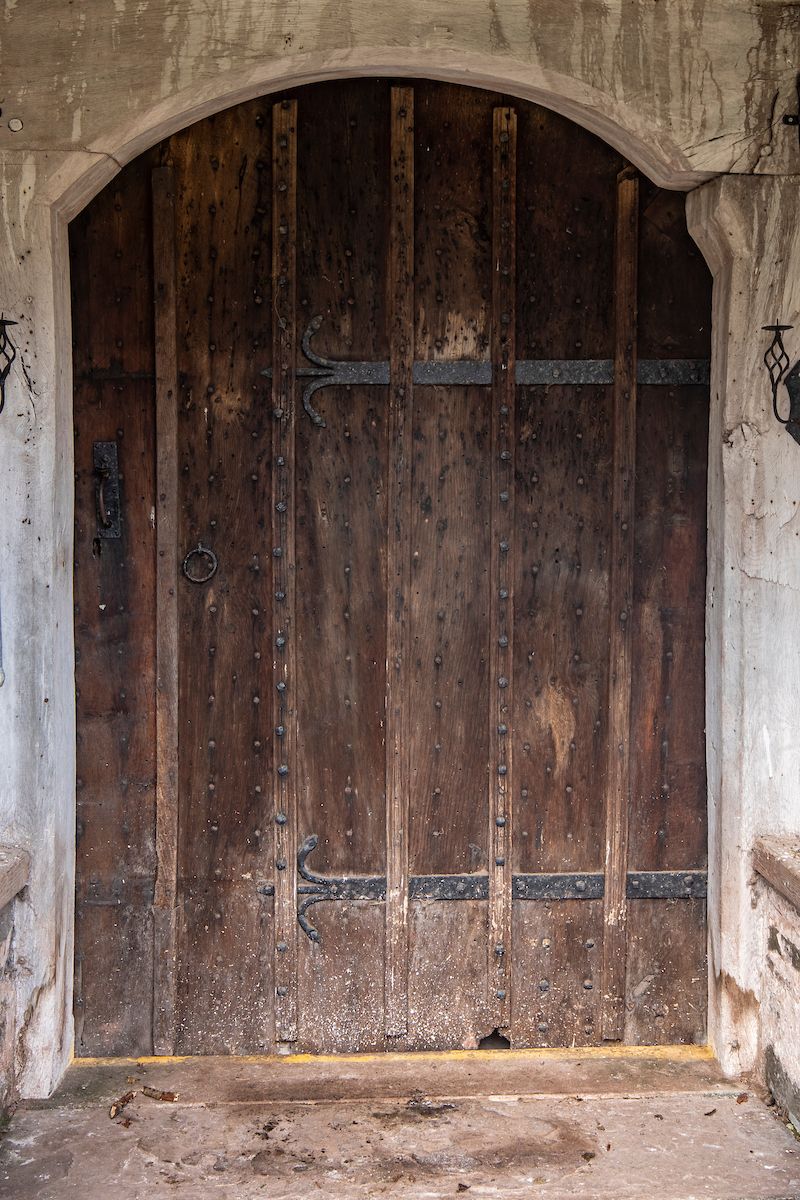
Shortly after I see the wren, a slender shaft of light appears from the smaller hole in the door, capturing the dust motes in its rays. I look to where it’s landed - an orb on the wall to the left of the font.
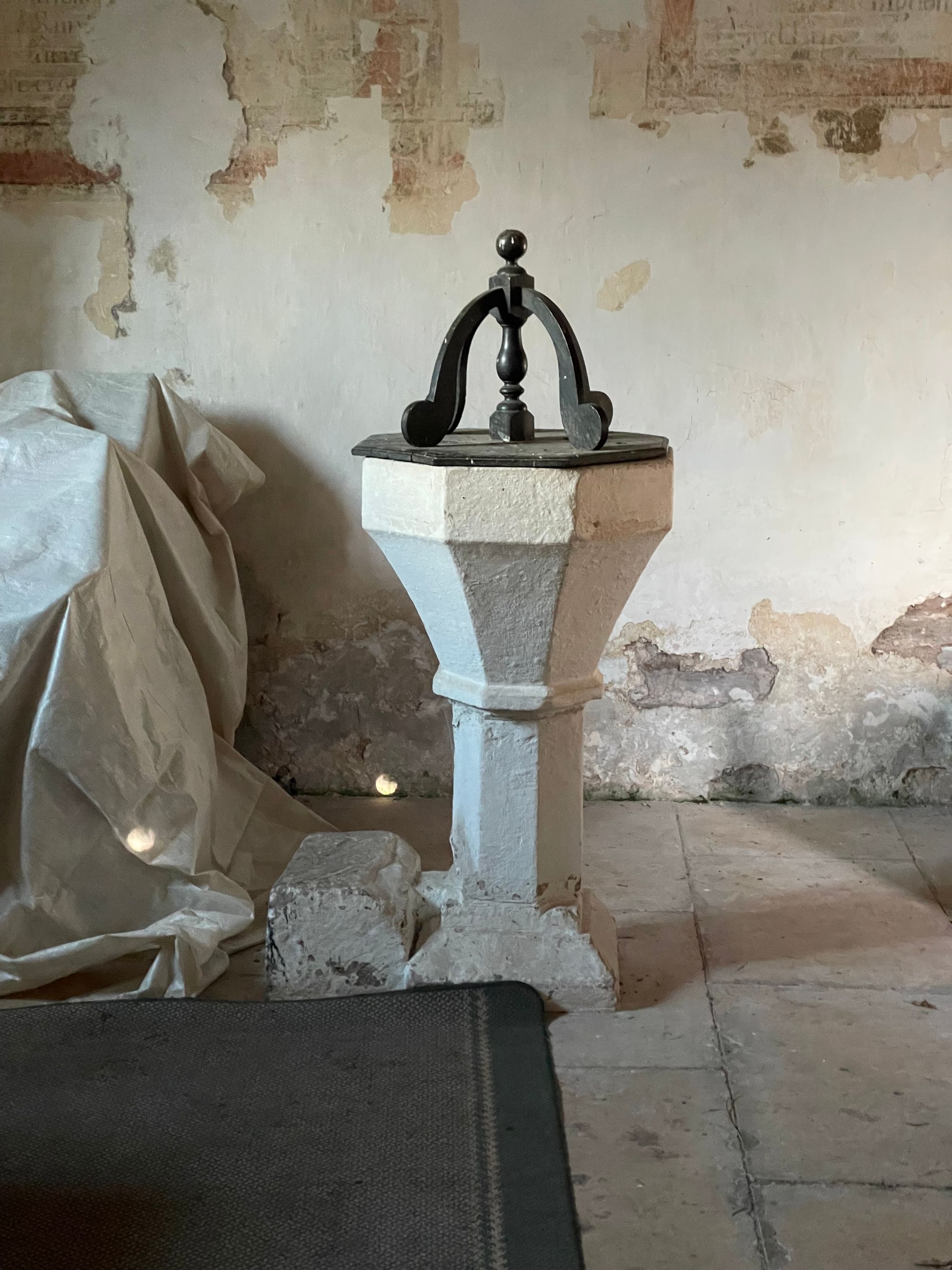
During my photography, I keep checking back on the light shaft from the door. The orb has reached the base of the font. The north wall is now a sundial, the liturgy secondary to horology - the font is the gnomon.
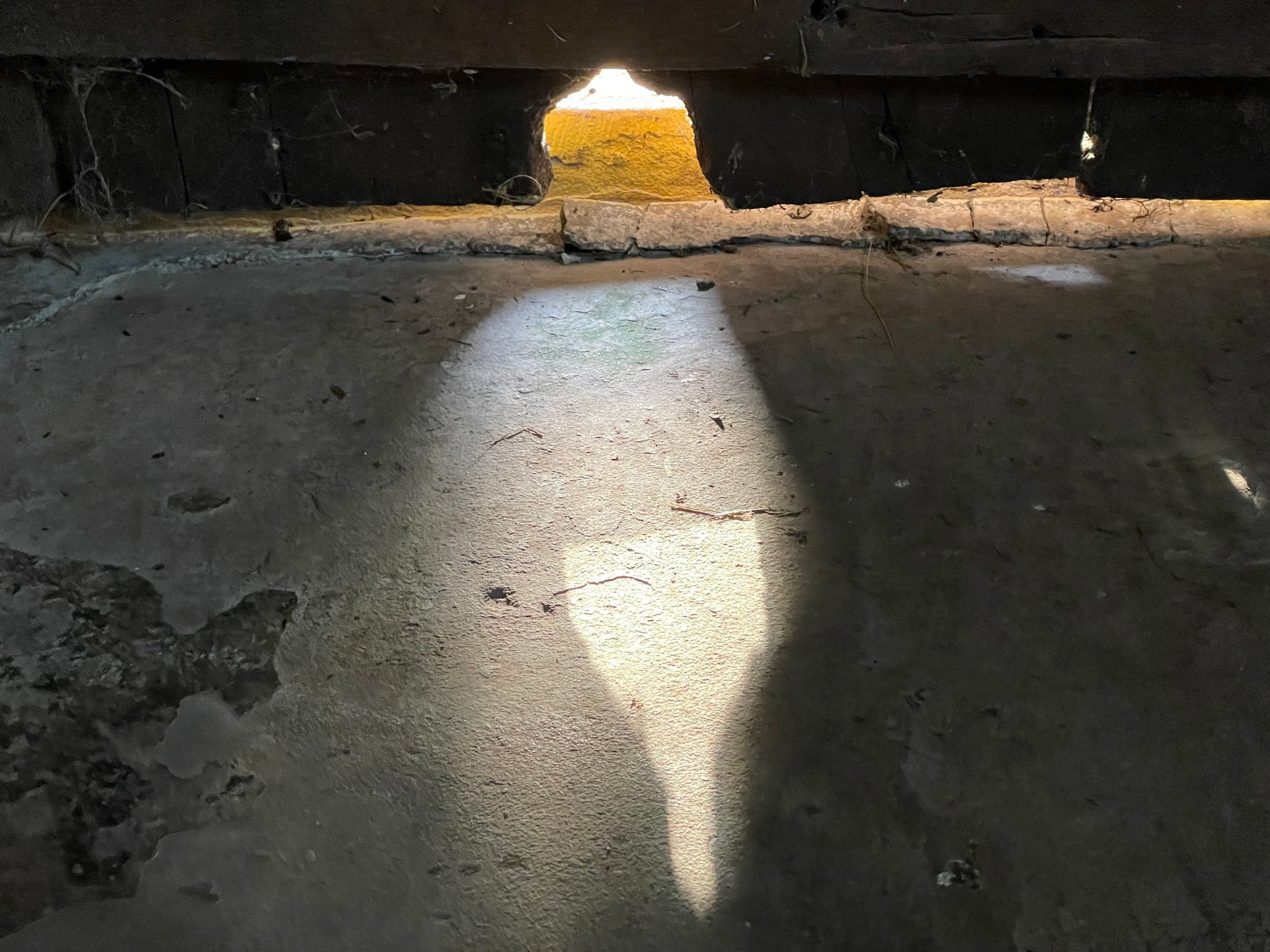
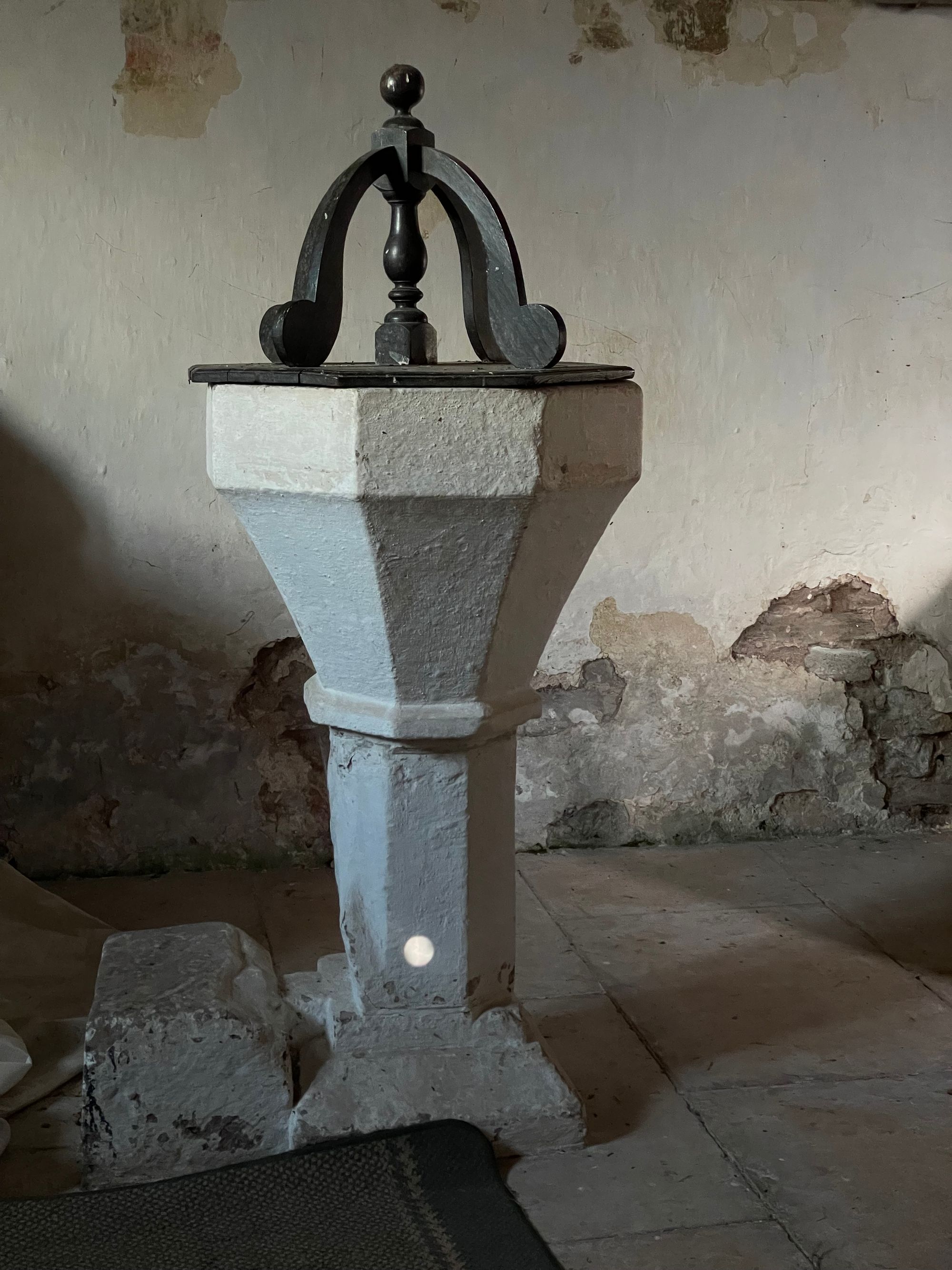
As the day circles around I continue with my work, remembering the words of John Ruskin when he first used a daguerreotype to photograph the buildings of Venice. He felt as if he were carrying off the palace itself within his camera. I too feel like a magician in places like this, capturing the magic of this space within the confines of my camera - bottled within the sensor.
When the light orb reaches the shaft of the font, I notice some movement within its sphere. I bend down to focus in, and realise that I’m witnessing an act of magic that has mesmerised human beings for millennia. The world outside has been transported along this shaft of light onto the font, the traditional place of new beginnings. The clouds in sharp relief are moving at a pace across the orb at the base of the font.
Momentarily, I feel a shift of perspective in this little church, shadowed by the Black Mountains. This precious incident of light has enshrined me within the intricate workings of a camera obscura. This little box with a hole through its door has carried me off into a different realm.
Next diary entry:
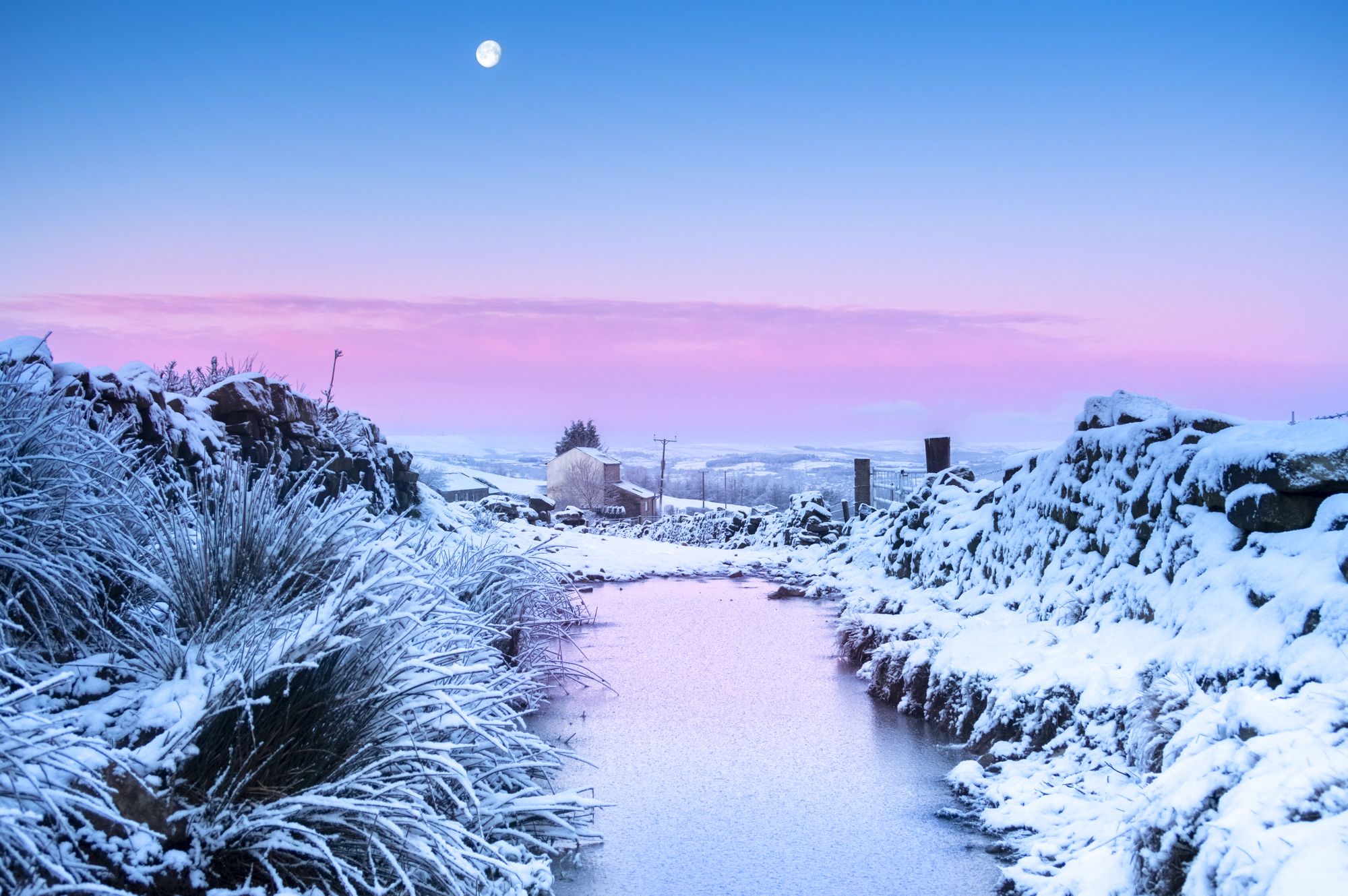
End Point
Additional Notes
"It’s only when the light orb reaches the shaft of the font that I notice some movement within its sphere. I bend down to focus in, and realise that I’m witnessing an act of magic that has mesmerised human beings for millennia."
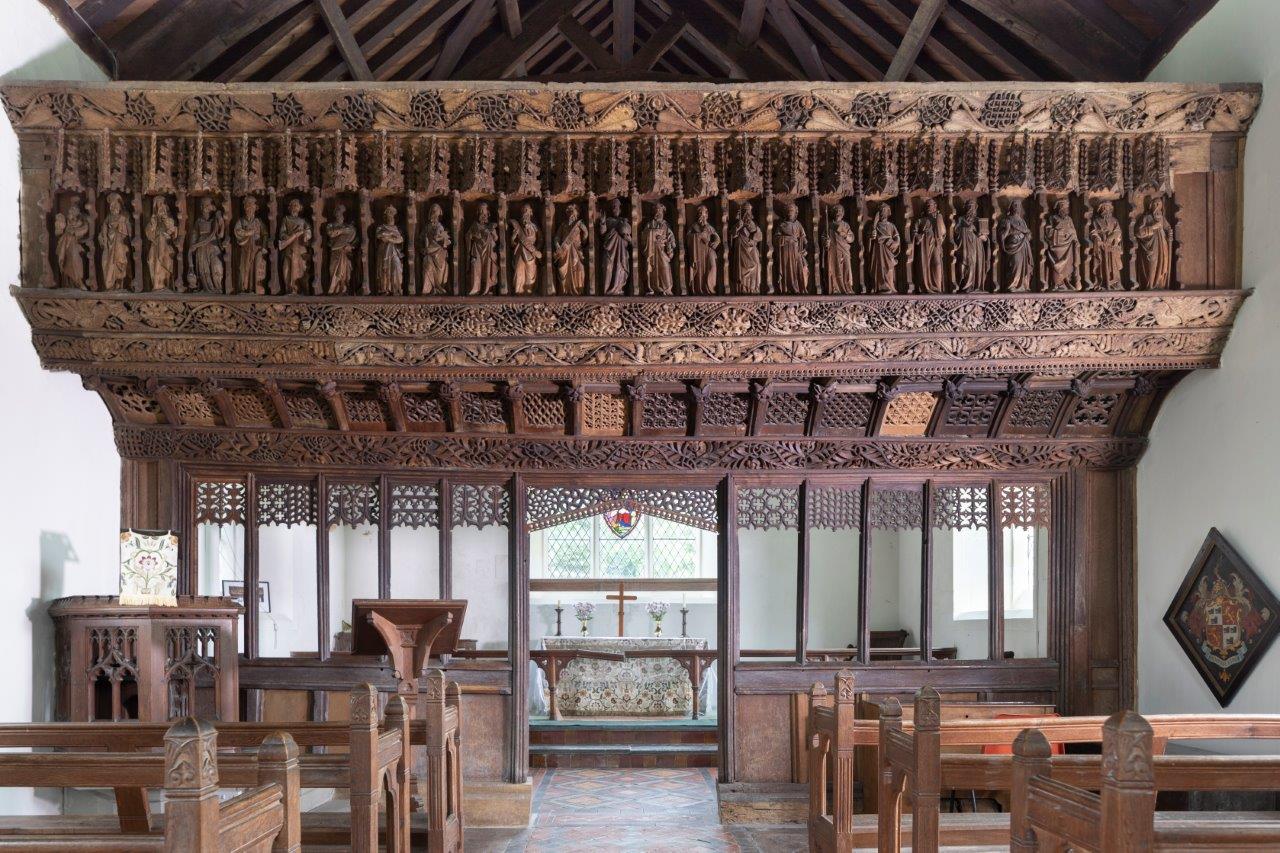
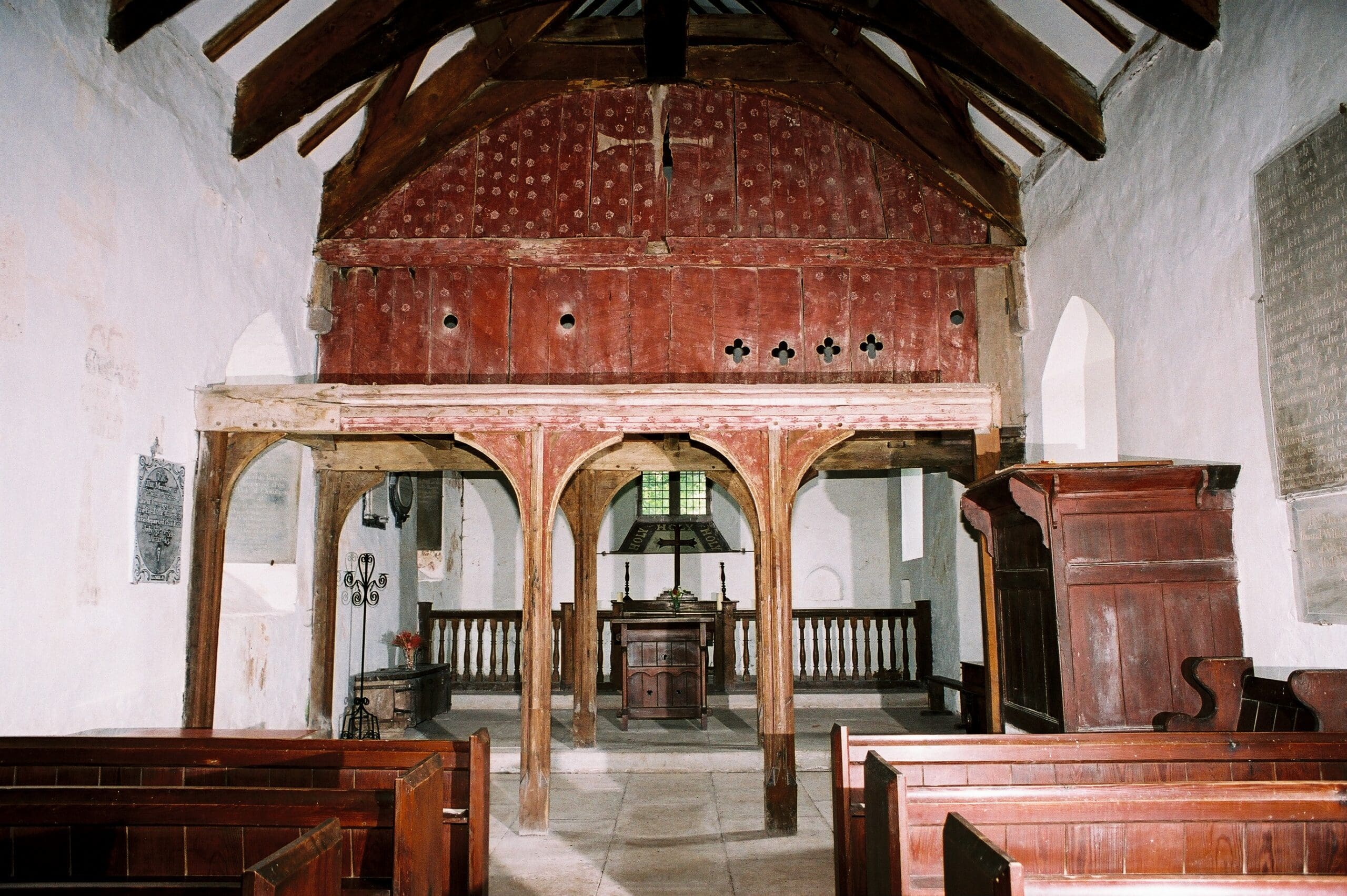
Next diary entry:

More about this Digest:
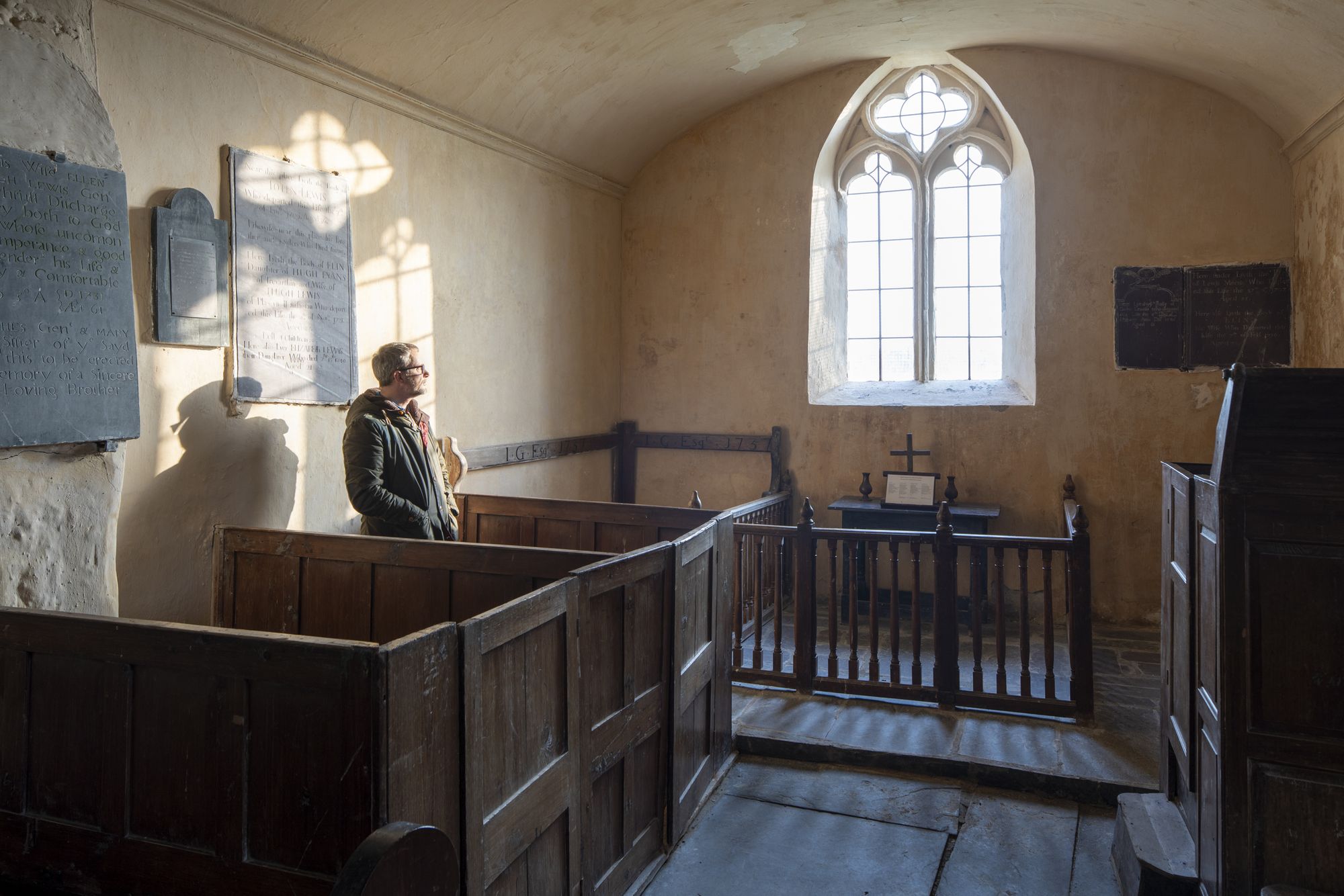
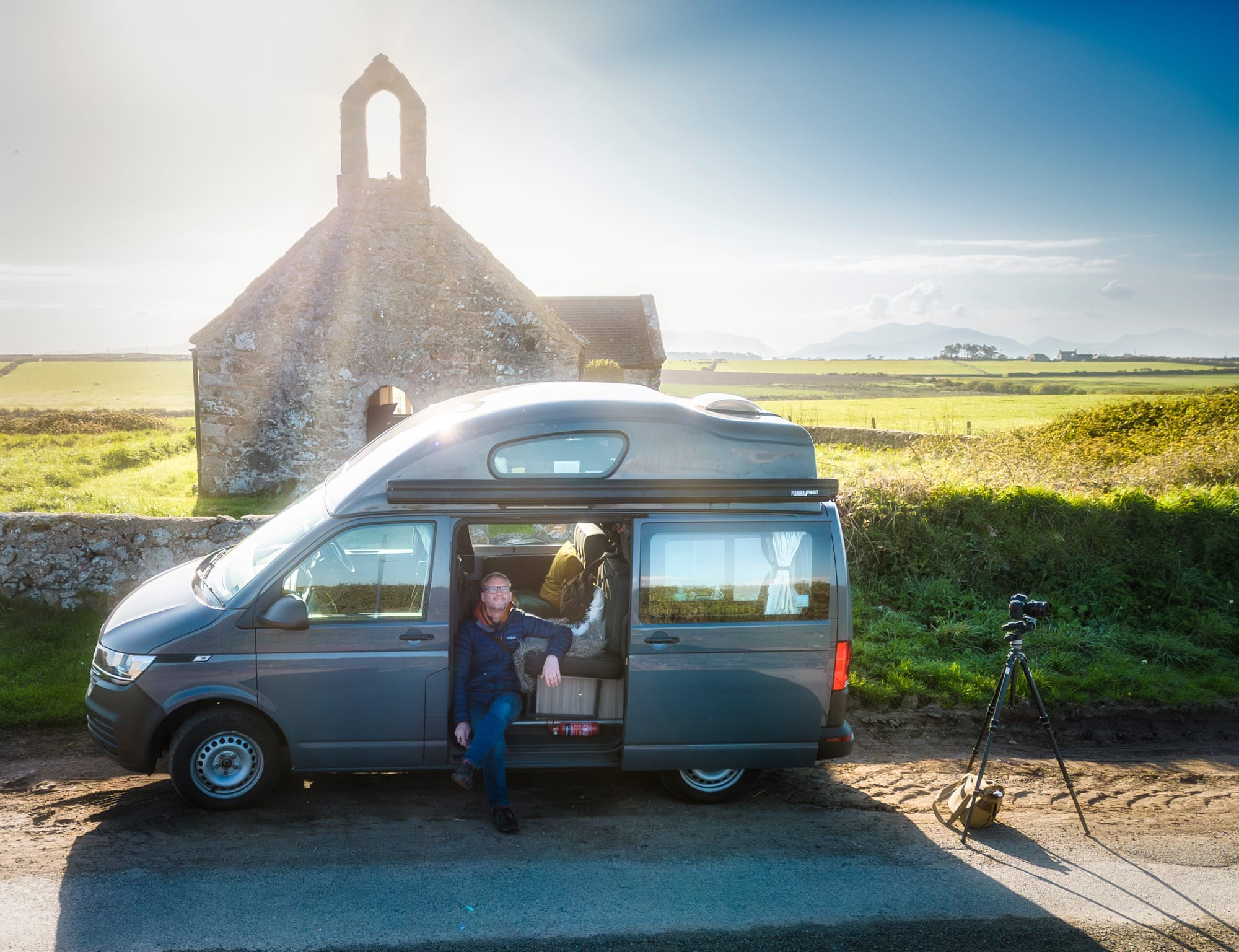
Can you help support me on my journey by becoming a Member?
Help keep Woody on the road and support the Genius Loci Digest.
Explore th Benefits



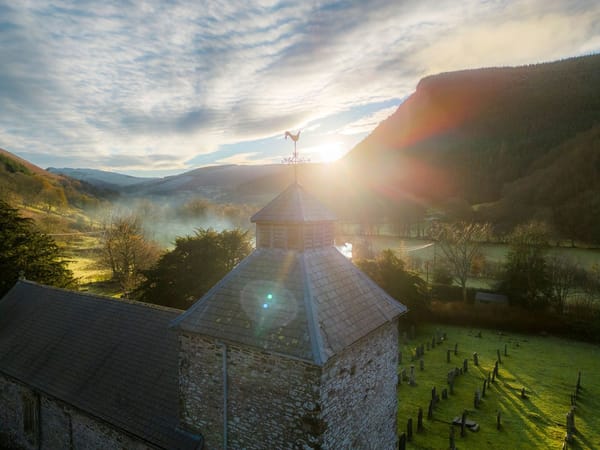




Member discussion